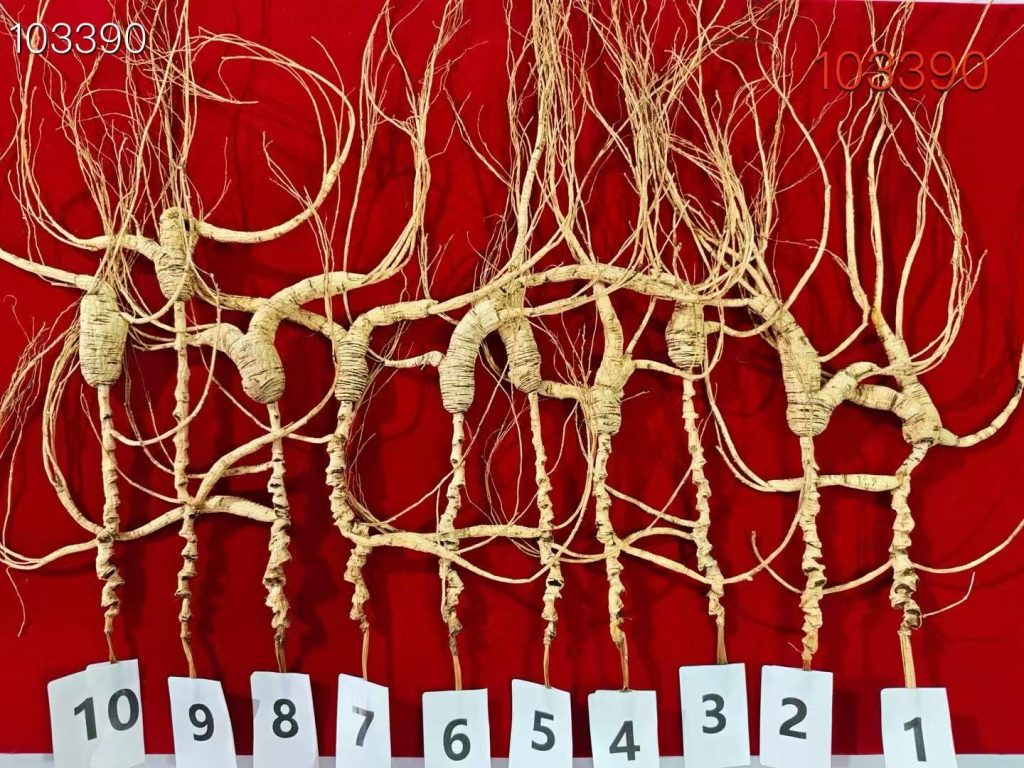Why Older Wild Ginseng from Changbai Mountains Is More Effective and How to Identify Its Age
Wild Ginseng (Panax ginseng), particularly from the Changbai Mountain region, is revered as a premium herbal remedy in traditional Chinese medicine.Its potency is closely tied to growth duration, with longer-aged specimens offering enhanced therapeutic benefits.This article explores why aging improves its efficacy and provides practical methods to determine its age.
Why Longer Growth Duration Enhances Effectiveness
Wild Ginseng grows naturally in the undisturbed temperate forests of Changbai Mountains for decades, sometimes over a century.Unlike cultivated Ginseng (which typically matures in 3–6 years), wild growth allows the plant to develop under harsh, natural conditions.Over time, its root accumulates higher concentrations of active compounds like ginsenosides, polysaccharides, and flavonoids, which are key to its immune-boosting, blood-regulating, and fatigue-reducing properties .
For example, wild Ginseng grown for 15–30 years exhibits balanced ginsenoside profiles (e.g., Rb1 and Rg1), which can help regulate blood pressure.Specimens over 30 years old often develop unique features like “pearl nodules”(from decayed root hairs) and deep, spiral-like ring patterns, indicating mature biochemical activity.The adage “七两为参,八两为宝” (literally “7 taels is Ginseng, 8 taels is treasure”) reflects the rarity and value of older wild Ginseng, as only a fraction survives natural challenges like climate shifts and pests .
How to Identify the Age of Wild Ginseng
Determining the age of wild Ginseng requires analyzing multiple morphological characteristics.Here are the key indicators:
1.Lü Tou (Root Stem/Neck)
The root stem(芦头) is the most critical feature.Each year, the plant sheds its above-ground stem and leaves, leaving behind a scar called a “Lü Wan”(芦碗).The number of visible Lü Wan generally corresponds to the plant’s age.However, early-year Lü Wan(first 3–40 years) may fade or become indistinct due to environmental stress or damage .
Wild Ginseng stems are often divided into three distinct sections:
- Mǎ Yá Lü(马牙芦): The topmost part with sparse, large scars.These are easier to count and indicate the most recent growth years.
- Duī Huā Lü(堆花芦): The middle section with densely packed, overlapping scars.While harder to count precisely, experienced foragers estimate this segment’s age by multiplying visible scars by 2 (due to potential growth interruptions) .
- Yuán Lü(圆芦): The smooth, lower stem near the main root.A Yuán Lü typically appears after 30 years of growthand is a hallmark of high-quality wild Ginseng .
2.Pearl Nodules
Pearl nodules (珍珠点) are small, grain-like bumps on root hairs caused by repeated decay and regrowth of the roots.The density of these nodulescorrelates with age: more nodules suggest a longer growth period .
3.Ring Patterns (Iron-Wire Texture)
The spiral-like ring patterns(铁线纹) on the main root’s shoulder (upper part) are deeper and denser in older specimens.These patterns resemble tightly coiled iron wire, with each ring representing years of adaptation to environmental stress .
4.Root Hairs
Older wild Ginseng has fewer, sturdier root hairs(须根).Younger plants develop abundant, delicate hairs, while aged specimens exhibit sparse, resilient roots with a **“whip-like”**texture (鞭条须) .
5.Stem Shape and “Ding” (不定根)
The stem’s shape(芦头形态) and the “Ding”(艼, a secondary root growing from the stem) also provide clues.A “three-segment stem”(三节芦), combining Mǎ Yá Lü, Duī Huā Lü, and Yuán Lü, typically indicates 30+ years of growth.The Ding (often shaped like a date kernel, 枣核艼) may develop its own ring patterns in specimens over 50 years old .
Important Notes
- Wild vs.Cultivated: Cultivated Ginseng (园参) is rarely aged beyond 6 years, as it often rots before maturing.Older wild Ginseng is distinct due to natural growth patterns .
- Expertise Required: Accurate age estimation demands experience, as natural factors like soil conditions or injuries can distort Lü Wan counts.A 15-year wild Ginseng might have 12 visible Lü Wan due to early growth delays .
- Environmental Influence: Wild Ginseng grows in cold, humid climates(-40°C to 25°C) with fertile forest soil (pH 5.5–6.2).These conditions slow growth but enhance compound development .
Conclusion
Wild Ginseng’s age directly impacts its medicinal value.By examining the root stem’s scars, pearl nodules, ring patterns, root hairs, and secondary roots, one can estimate its growth duration.However, due to natural variability, these indicators should be cross-referenced for accuracy.For authenticity and potency, prioritize specimens from Changbai Mountains with clear Yuán Lü and dense Lü Wan.
